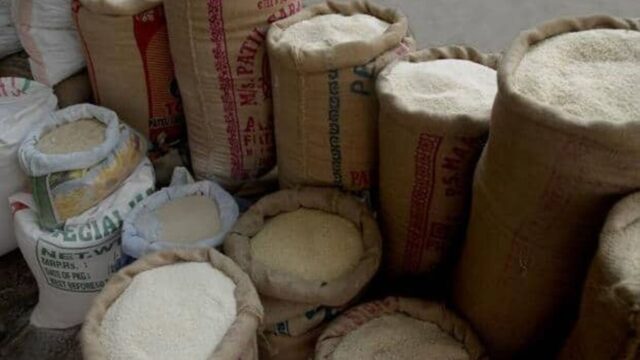NEW DELHI:India has only been able to supply around 73,000 tonnes or 3.7% of agricultural commodities pledged to its key strategic partners under bilateral arrangements, partly as a result of measures taken to tame domestic prices.
Some Indian farm exports have become uncompetitive as Indian exporters, under the G2G deal, quote prices that are higher than those of other top producing countries.
Another factor is the smaller quantities approved by the Indian government because of the need to protect domestic supplies, a senior government official said.
Prices of Indian exports are higher owing to 20% export duties
Prices of Indian exports are higher because of 20% export duties slapped on key commodities—a measure taken to tame inflation—and costs from a supply chain that has lengthened since the involvement of the National Cooperative Exports Ltd or NCEL that was established last year.
India took a slew of measures to curtail food inflation amid poor crops in the past two years, including export bans on wheat, broken rice , non-basmati white rice, sugar and onion. Some of these date back to 2022, while others such as onion are more recent.
Also Read: India fails to make substantial export gains in the US and Europe in FY24
However, amid an increasing focus on cementing its place in the global south, the government waived the export ban for some of these commodities, which are channelled through its export agency National Cooperative Exports Ltd. established under the Multi State Cooperative Societies (MSCS) Act, 2002.
In the last two years, India has approved exports of 1.93 million tonnes of non-basmati white rice, broken rice, sugar, wheat and onion to countries like Bhutan, Bangladesh, Cote D Ivory, Egypt, Kenya, Nepal, Philippines, Rep Guinea, Singapore and the UAE under G2G or government-to-government deals.
However, by the end of April this year, NCEL could supply only 3.9% of allocated non-basmati rice, 3.2% of broken rice, 3% of wheat and none of sugar, the official cited above informed.
“As we have been informed, this is because some countries were asking for waiver of export duty of 20% imposed on various variety of rice while a few demanded exports in tranches and other nations had month-specific requirement apart from our less competitive prices.”
“The government is facing problems exporting restricted food items at the G2G level to 13 countries which have identified huge quantities are lying with exporters,” the official said.
Also Read: India may export 14,000 tonnes of non-basmati rice to Mauritius and 7,500 tonnes of onions to Qatar
Under the current process, if a tender is issued and Indian exporters enter the deal but the receiving country is not keen on going ahead because of high prices, the export comes to a halt.
“For example, in the case of non-basmati white rice, we found out that price quoted by us is higher (than those quoted by other suppliers) for countries like Cote D Ivory, Rep Guinea and the UAE. As far as onion exports are concerned, Bangladesh is currently importing from five other nations because of their competitive prices compared to India and the onset of Bangladesh’s harvest season has improved the market.
These are just examples, and the issue is country’ specific. We are in touch with each country and trying to work it out. However, we will call off the deal in case a nation is no longer interested,” the official added.
Queries sent to the commerce and food and public distribution ministries remained unanswered at press time.
“Exports by NCEL have been sluggish mainly because of India quoting higher prices, specifically for rice. On top of it, NCEL was newly formed in December 2023 when restrictions on some varieties of rice came into effect. At that time, they had man-power issues, and they were still working out a plan related to logistics,” an official with one of India’s leading exporting farms said on condition of anonymity.
Also Read: ‘India’s exports likely to reach $450 bn in 2024 despite Red Sea-linked disruptions’
NCEL was set up to provide a complete ecosystem for the promotion of exports mainly of agricultural commodities in which India has a comparative advantage.
The reason behind India quoting high prices compared to other nations is the supply chain has become longer (in addition to export duties. Earlier when exports were not restricted, Indian exporters entered contract and supplied it directly to importing companies but now NCEL through NAFED, NCCF and other cooperatives and agencies like IFFCO call for tenders and then exporters get involved and so on, he added.
The market-based system was stopped following the export ban, which saw the government take the lead in exporting to select countries on a government-to-government basis.
You are on Mint! India’s #1 news destination (Source: Press Gazette). To learn more about our business coverage and market insights Click Here!




